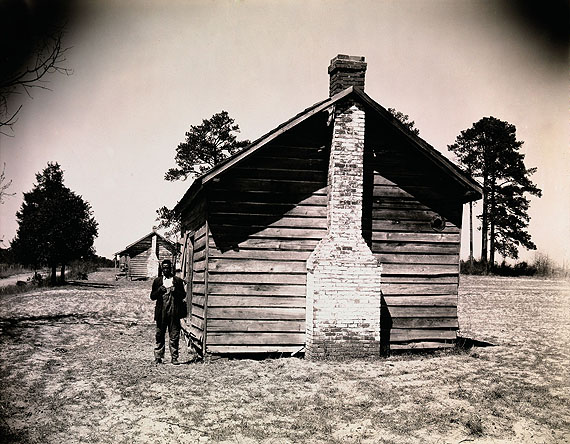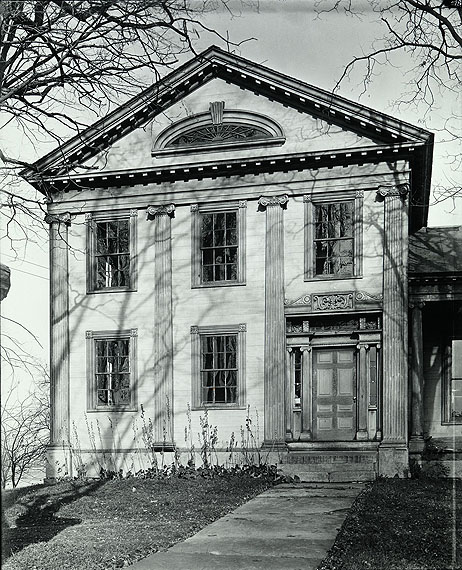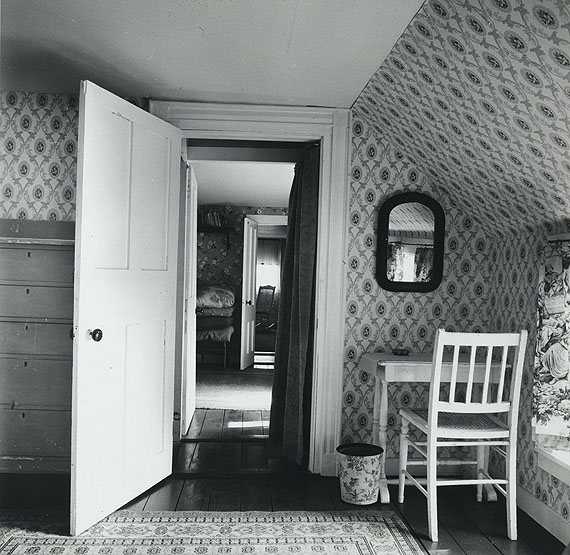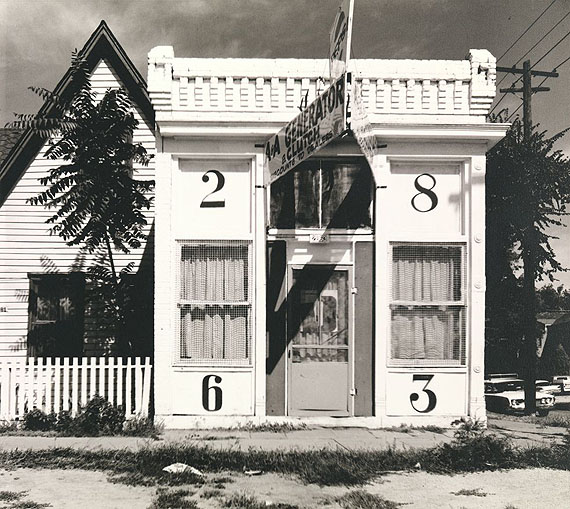
Walker Evans »
Decade by Decade
Exhibition: 21 Sep 2012 – 20 Jan 2013
Thu 20 Sep 19:00
Die Photographische Sammlung / SK Stiftung Kultur
Im Mediapark 7
50670 Köln

Die Photographische Sammlung / SK Stiftung Kultur, Köln
Im Mediapark 7
50670 Köln
+49 (0)221-88895300
photographie@sk-kultur.de
www.photographie-sk-kultur.de
Thu-Tue 14-19

Walker Evans: Decade by Decade
An exhibition by the Cincinnati Art Museum, curated by James Crump, Chief Curator at the Cincinnati Art Museum, in co-operation with Die Photographische Sammlung/SK Stiftung Kultur, Cologne
September 21, 2012—January 20, 2013
Opening: Thursday, September 20, 2012 at 7:00 p.m.
With this exhibition, Die Photographische Sammlung/SK Stiftung Kultur is taking the opportunity to present a major retrospective of Walker Evans’s oeuvre. For the first time in Germany this unprecedented exhibition gives decade by decade an overview of the multi-faceted works based on more than two hundred original prints from between 1928-1974. James Crump, Chief Curator at the Cincinnati Art Museum, has developed a magnificent presentation from the unique private collection of Clark and Joan Worswick that sheds light on the whole of Walker Evans’s productive period and important phases of his work and gives a vibrant impression of his consistent interest in specific approaches. Crump’s insights are documented as well in the accompanying book with a text highlighting the comprehensive nature of Walker Evans’s photography and its international reception. The historically important retrospective in 1971 at the Museum of Modern Art curated by John Szarkowski shaped the picture of Walker Evans which remained relatively unchanged for a long time. Meanwhile, and through intensive research work on different holdings of Walker Evans’s photos, new aspects can be reflected upon and integrated.
Walker Evans (1903–1975) is one of the great personalities in the history of 20th-century photography. His creative work has set standards for a kind of photography that has been adopted by art as the documentary style. He also referred to his work as “lyrical documentation,” which if nothing else demonstrates his predilection for literature, considering that he initially pursued a career as a writer. It was in about 1928 that he changed his professional plans and gave priority to photography.
The extensive photographic oeuvre of Walker Evans has increasingly assumed model character. It continues to influence our view toward as well as of the world that surrounds us, in particular America. In five decades of his creative work, the photographer charted a uniquely authentic image of America with straight photographs, and like no one before him he has raised our awareness for identity-generating and history-charged moments, with a particular sense for the everyday and the subtle—the American vernacular.
Walker Evans - Decade by Decade seeks to break through the reception of Evans’s work. If this selection of images features icons of the history of photography created by Evans, then this occurs without pathos, and they are a natural part of his succession of works. A productive alternation between personal and professional, the viewer tracks Evans’s biography as well as the changing image of America over time—from the Great Depression to periods of stabilization and bustling everyday life: from the 1920s early impressions of his New York neighborhood; portraits of his friends and comrades that allow drawing conclusions about his complex cultural surroundings; followed in the 1930s by studies of 19th-century architecture that address the evolved lifestyle culture; series of pictures from Tahiti and Cuba; African sculptures and masks, commissioned by the New York Museum of Modern Art; numerous photographs taken in the 1930s in the rural South that contrast with the lifestyle of the city dwellers and passers-by in, for example, New York. Besides street views, American memorials, window displays from retail stores far away from big business, the show includes examples of his important subway photographs, which were taken with a hidden camera. Time and again modestly arranged interiors tell stories about the life of their occupants and automatically bring to mind a remark Evans once made: “I do like to suggest people by absence.” Magical, captivating photographs grow out of Evans’s interest in typography, advertising, and mass-produced articles, which can be seen as a preview of what was soon to develop into Pop Art and its assemblages.
Decade by Decade shifts attention to many of the photographer’s unknown motifs, including those produced in the 1940s, 1950s, and 1960s created in connection with Fortune magazine, for which Evans worked as Special Photographic Editor between 1945 and 1965. Rarely seen are a group of pictures he took on several trips to London e.g. in 1958 on commission for Architectural Forum, and also during stays at Robert Frank’s home in Nova Scotia at the beginning of the 1970s. The last photographic chapter contains color Polaroids (1973/74) of condensed views, be they road markings or signs on buildings, both concrete as well as abstract and revolutionary at once. They point the way ahead to color photography which Walker Evans used, as the Fortune magazines in the showcase document, since the 1940s, yet he regarded it critically. This new form of photography was to be further developed in the oeuvres of William Christenberry, William Eggleston, or Stephen Shore. It was not only to them that Walker Evans’s photographs must have seemed like a breath of fresh air. To this very day, artistic photography continues to be inspired by Evans’s view of civilization and its traces and continues to discover new, plausible modes of transfer.
The exhibition will also be shown at the Landesgalerie Linz am Oberösterreichischen Landesmuseum, 27/02 – 26/05/2013, and Huis Marseille, Amsterdam, 22/06 – 15/09/2013.
A new, bilingual edition of the catalogue Walker Evans: Decade by Decade, has been published by Hatje Cantz in conjunction with the exhibition.
(Price: €49.80)
Room 3:
ANALOGIEN – BLICK IN DIE SAMMLUNG | ANALOGIES—A LOOK AT THE COLLECTION
In connection with Walker Evans, Die Photographische Sammlung/SK Stiftung Kultur is presenting a selection from its own holdings, with photographs by Eugène Atget, Bernd and Hilla Becher, Joachim Brohm, William Christenberry, Jim Dine, Walker Evans, Lee Friedlander, Candida Höfer, Gabriele und Helmut Nothhelfer, Tata Ronkholz, August Sander, Wilhelm Schürmann, and Stephen Shore.
�

Walker Evans. Decade by Decade
Mit dieser Ausstellung nimmt die Photographische Sammlung/SK Stiftung Kultur die besondere Gelegenheit wahr, erstmalig in Deutschland eine solch umfangreiche Retrospektive mit Photographien von Walker Evans zu präsentieren. Das über fünfzig Jahre entstandene Werk des Photographen wird mit weit über 200 Originalabzügen aus den Jahren 1928 bis 1974 vorgestellt, die aus der bedeutenden Privatsammlung von Clark und Joan Worswick stammen, begleitet von einigen Werkgruppen deutscher Sammlungsprovenienz. James Crump, Chief Curator am Cincinnati Art Museum, hat aus der Sammlung Worswick eine qualitätvolle und spannende Auswahl getroffen. Alle Schaffensphasen von Evans werden beleuchtet, die Kontinuität seines Arbeitsansatzes verdeutlicht und ein neu reflektierter Rezeptionsweg beschritten. Crumps Forschungsergebnisse sind in einem begleitenden Katalogbuch dokumentiert, der einen fundierten Text zum Gesamtwerk enthält. Die historisch bedeutende Retrospektive 1971 im Museum of Modern Art in New York, kuratiert von John Szarkowski, hat die Werkrezeption von Walker Evans für lange Zeit bestimmt. In der Zwischenzeit sind durch weitere Recherchen zu Teilbereichen seines Schaffens Aspekte zu Tage getreten, die zu einer vertiefenden Betrachtung des Gesamtwerkes führen.
Walker Evans (1903–1975) gehört zu den großen Persönlichkeiten der Photographiegeschichte des 20. Jahrhunderts. Sein Schaffen ist maßgeblich für eine Photographieausrichtung, die als „dokumentarischer Stil“ bezeichnet wird. Er selbst verwandte im Kontext seiner Tätigkeit die Bezeichnung „lyrische Dokumentation“, worin sich nicht zuletzt sein großes Faible für die Literatur spiegelt, steuerte er zunächst eine Karriere als Schriftsteller an. Ungefähr ab 1928 aber wandelte sich sein Berufsplan und die Photographie erhielt Vorrang.
Über Jahrzehnte hinweg bis in die Gegenwart gewann das umfangreiche photographische Werk von Walker Evans zunehmend Vorbildcharakter. In den fünf Dekaden seines Schaffens hat der Photograph mit nüchtern registrierenden Aufnahmen ein einzigartig authentisches Bild Amerikas aufgezeichnet und wie kein anderer vor ihm mit besonderem Empfinden für das Alltägliche und Subtile – das American Vernacular –, identitätsstiftende und geschichtsträchtige Momente ins Bewusstsein gebracht.
Kommen in der aktuellen Bildauswahl von Evans geschaffene Ikonen der Photographiegeschichte vor, so geschieht dies ohne Pathos und sie stehen im selbstverständlichen Fluss seiner Arbeiten. Persönliches wie Professionelles im produktiven Wechsel zueinander, der Betrachter folgt Evans’ Biographie ebenso wie dem sich wandelnden Zeitbild Amerikas, von der großen Wirtschaftskrise bis hin zu sich stabilisierenden Zeiten und geschäftigem Alltagsgeschehen: Frühe Eindrücke der 1920er-Jahre aus seiner Wohngegend in New York, Bildnisse seiner Freunde und Mitstreiter, die Rückschlüsse auf sein verzweigtes kulturelles Umfeld zulassen, Architekturen des 19. Jahrhunderts, die sich der gewachsenen Lebenskultur zuwenden, Bildreihen aus Tahiti und Kuba, afrikanische Skulpturen und Masken, entstanden im Auftrag des New Yorker Museum of Modern Art, zahlreiche Photographien, aufgenommen in den 1930ern im ländlichen Süden der USA, die im Kontrast zum Lebensstil der Großstädter und Passanten etwa New Yorks stehen. Neben Straßenansichten, amerikanische Denkmale, Schaufensterauslagen fern des Big Business’, kommen Beispiele seiner wichtigen Subway-Photographien vor, aufgenommen mit verdeckter Kamera. Des Weiteren erzählen Interieurs mit ihren bescheidenen Arrangements über das Leben ihrer Bewohner, Bilder, die unwillkürlich an Evans’ Bemerkung „I do like to suggest people by absence“ erinnern. Aus Evans Vorliebe für Typographie, Werbung und Massenprodukte erwachsen magische-fesselnde Aufnahmen, die als eine Vorschau auf die sich bald entwickelnde Pop Art und ihre Assemblagen gesehen werden können.
Decade by Decade richtet ein besonderes Augenmerk auf noch unbekanntere Motive des Photographen, auch auf jene, die in den 1940er-, 1950er- und 1960er-Jahren entstanden. Sie bindet Arbeiten für die Zeitschrift Fortune ab 1945 ein oder solche, die auf Reisen nach London im Auftrag für die Zeitschrift Architectural Forum oder auf Aufenthalte im Haus von Robert Frank in Nova Scotia Ende der 1960er-Jahre zurückgehen. Das letzte photographische Kapitel, das er überlieferte, sind farbige Polaroids verdichteter Teilansichten, seien es Fahrbahnmarkierungen oder Hausbeschilderungen, konkret wie abstrakt und revolutionär zugleich. Sie sind richtungsweisend für eine Art von Farbphotographie, wie sie Evans bereits während seiner Tätigkeit für Fortune angewandt hatte und die er damals zeitweilig kritisch sah. Die Ausstellung zeigt hierzu Beispiele seit den 1940er-Jahren in einer Vitrinenpräsentation. Die neue Form des Umgangs mit Farbe findet Fortsetzung in vielen Werken der nachfolgenden Generation, für sie wirken Walker Evans’ Photographien wie ein Befreiungsschlag. Bis in die Gegenwart erfährt die künstlerische Photographie von seinem Blick auf die Zivilisation und ihren Spuren allseitig Anregung und findet fortwährend neue plausible Transfers.
Die Ausstellung wird vom 27. Februar bis 26. Mai 2013 in der Landesgalerie Linz am Oberösterreichischen Landesmuseum zu sehen sein und vom 22. Juni bis 15. September 2013 im Huis Marseille in Amsterdam.
Zur Ausstellung erschien im Hatje Cantz Verlag der neu aufgelegte Katalog Walker Evans: Decade by Decade, mit Texten in deutscher Übersetzung
(Preis: € 49,80).
Raum 3:
ANALOGIEN – BLICK IN DIE SAMMLUNG
In den Kabinetträumen zeigt die Photographische Sammlung/SK Stiftung Kultur in Anbindung an Walker Evans eine Auswahl aus den eigenen Beständen, mit Photographien von Eugène Atget, Bernd und Hilla Becher, Joachim Brohm, William Christenberry, Walker Evans, Lee Friedlander, Candida Höfer, Gabriele und Helmut Nothhelfer, Tata Ronkholz, August Sander, Wilhelm Schürmann und Stephen Shore.�

